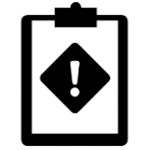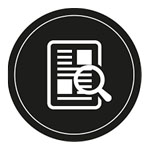ARCHIVED - Safety & Environment

This page has been archived on the Web
Information identified as archived is provided for reference, research or recordkeeping purposes. It is not subject to the Government of Canada Web Standards and has not been altered or updated since it was archived. Please contact us to request a format other than those available.
The National Energy Board regulates over 75,000 kilometers of pipeline and transmission lines transporting approximately $100 billion worth of petroleum and electricity products to Canadians and the world this past year alone. It is the NEB’s job to make sure companies are doing what it takes to keep their systems safe and the environment protected. To do this, we seek out exceptional leaders and technical experts who share our commitment to safety, security and environmental protection.
It is our responsibility to keep Canadians informed on how this is being done. The NEB believes in holding companies publicly accountable and regularly posts information on its enforcement actions to our website so the public can see how regulated companies are performing.

Safety Orders
The National Energy Board Onshore Pipeline Regulations gives Board Members the authority to issue binding safety orders to NEB-regulated companies if they believe it is necessary for safety or environmental reasons. These Safety Orders can impose restrictions on how a pipeline is operated until the Board is sure it is safe to return to normal operations. In one case this year, the Board issued a series of stringent safety orders to Trans Northern Pipelines Inc. (TNPI), a company that had historically operated their pipelines at a higher pressure than what had been approved as safe. These orders not only upheld standards of safety and environmental protection but required the company to improve its overall practices.
View this and other current safety orders and other company information on our Compliance and Enforcement web page.
Pipeline Safety
The NEB holds its regulated companies publicly accountable for keeping their pipelines safe and protecting the environment. From April 2016 to March 2017, there were 41 releases of high pressure gases. These gases dissipate into the air and are unrecoverable. There were also seven releases of liquid products such as oil. 100% of the liquid products that spilled were able to be cleaned up. Of those releases 13 were incidents that harmed people or the environment. There were no worker fatalities. The NEB also tracks incidents like fires, explosions, and worker injuries. Detailed information on these incidents can be found on our website and is updated every three months. This allows Canadians to have easy access to current safety information.
View the most up-to-date company performance information on our Safety Performance Dashboard.
Emergency Management
Canadians have told the Board more information should be publicly available on how NEB-regulated companies plan to handle emergencies. In response, the Board issued an Order in April of 2016 requiring all NEB-regulated companies to make their emergency procedures manuals publicly available starting September 30, 2016. This was a first in North America and it is another way we are working to build trust with Canadians. In addition, the Board began requiring companies to provide additional details on their plans for emergency response at the project review stage of their application so it can be considered as part of the overall project.
Curious about what emergency management information companies are required to provide? Check out the Emergency Management program requirements for NEB-regulated companies.
Targeted Company Audits
Each year the Board conducts in-depth audits of its regulated companies. The intent of audits is to proactively identify any areas of concern before they become problems. This year the Board piloted targeted audits of NEB-regulated companies to effectively deliver results in a faster, more consistent way. Focused audits use existing data collected by the NEB through actions like inspections, putting a spotlight on any systemic issues. These types of audits let the NEB complete the work more quickly, trend data and compare results. If any areas of concern are found during an audit, the company must put together a detailed plan, called a Corrective Action Plan, for the Board’s approval which explains how they intend to fix the issues.
The Board posts audit reports, as well as the companies’ Corrective Action Plans, to our website so Canadians have all the details.

Safety Culture
Culture influences what people see, hear, feel, and say. Perhaps most importantly, it influences the decisions and actions (behaviors) of people in an organization. These behaviors ultimately drive safety outcomes and performance. The NEB is a part of the North American Regulators Working Group on Safety Culture, a collaborative group of regulators from across Canada and the United States that works together to research and study regulatory best practice in advancing safety culture. The NEB is also leading a multi-phased safety culture indicators project on behalf of the International Regulators Forum. NEB leadership of the North American Regulatory Working Group resulted in three recommendations being accepted to progress safety culture (safety culture assessment for regulators; pilot indicators in compliance verification activities; safety culture competency and training).
See the NEB’s latest work on this important topic on our Safety Culture page.
- Date modified:
